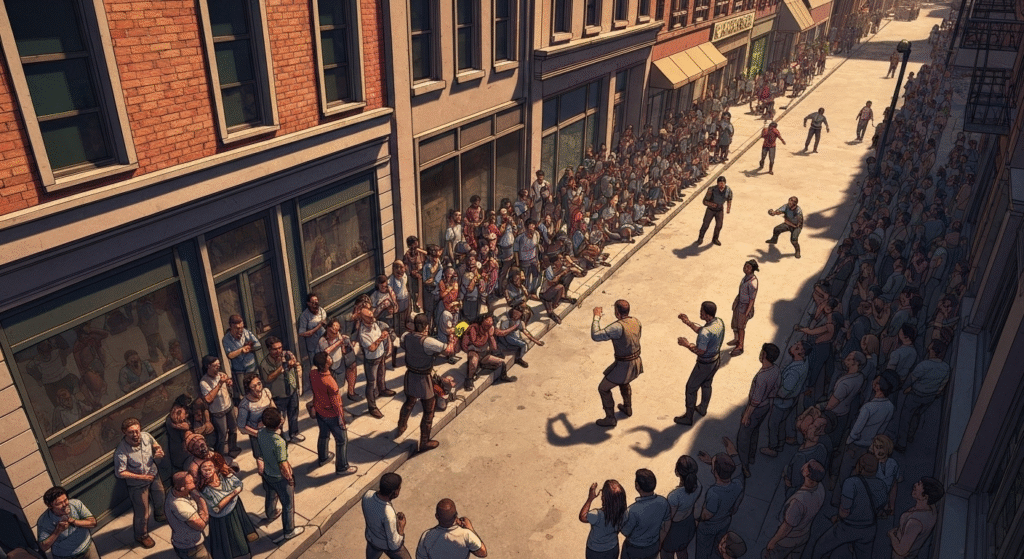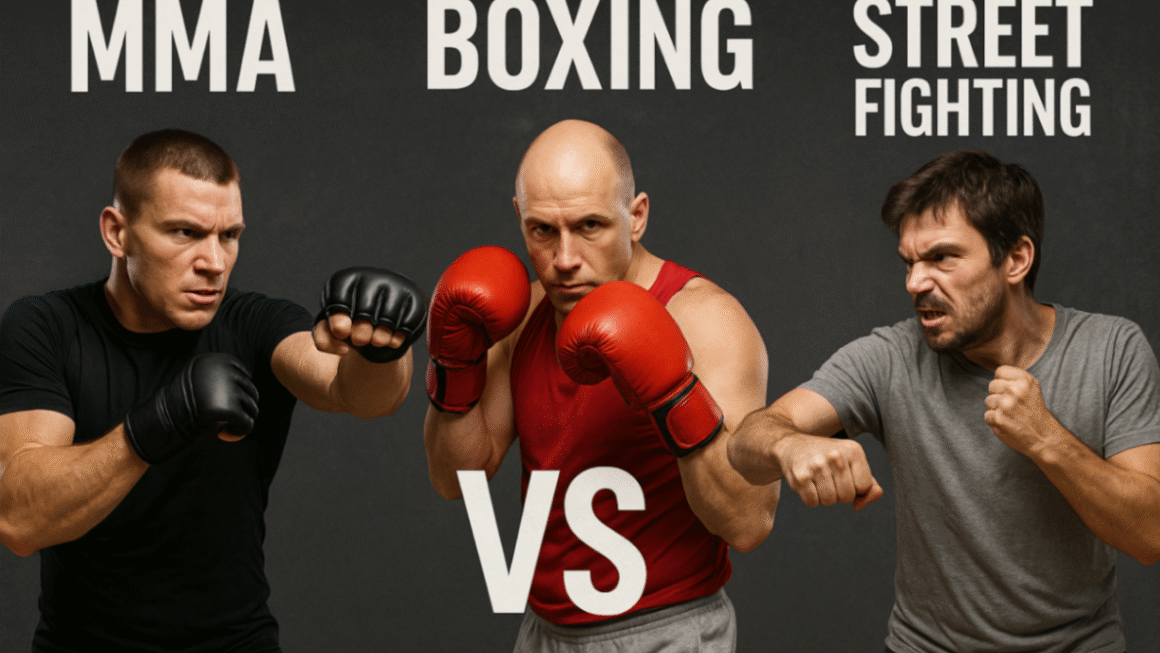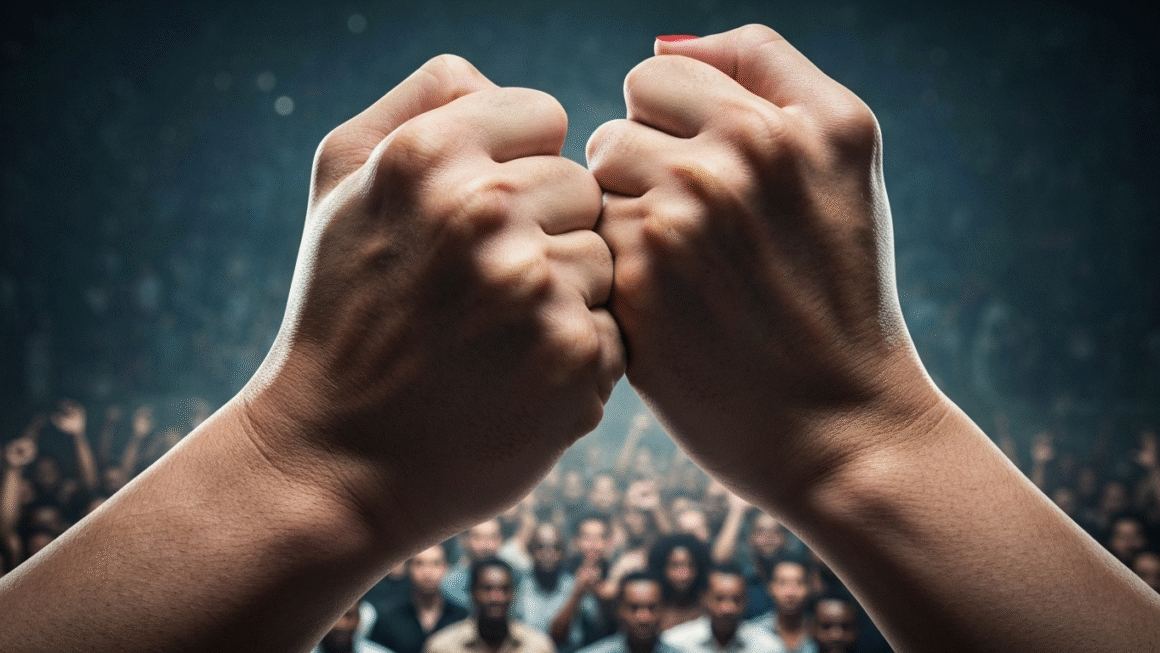Key Highlights
Here are the key takeaways about the reality of a street fight:
- Many common beliefs about a street fight are dangerous misconceptions often learned from movies.
- The bigger person does not automatically win; skill and strategy can overcome a size disadvantage.
- While beneficial, martial arts training does not guarantee victory against a determined attacker.
- Real fights are unpredictable and chaotic, unlike the choreographed scenes on TV.
- The risk of injury is extremely high, as there are no rules, referees, or safety equipment.
- An average person must prioritize escape over engagement.
Introduction
What you think you know about a street fight could get you seriously hurt. Popular culture, especially movies and television, has created a distorted picture of real-world violence, leading to dangerous misconceptions. Many people overestimate their ability to handle a physical confrontation, believing myths that simply are not true. Understanding the difference between these fictions and the harsh reality is crucial for your personal safety. This guide will debunk common myths and clarify what martial arts training can and cannot do for you.
Popular Myths About Street Fights

The most common misconceptions about a street fight stem from a lack of real-world experience. For the average person, knowledge of fighting comes from watching sports or action films, which rarely reflects the chaos of an actual assault. This can lead to a false sense of security and poor decision-making when faced with a real attacker.
This overconfidence is built on several key myths. Many believe that size is the ultimate deciding factor or that a few martial arts classes make you invincible. We will explore why these ideas are not only wrong but could put you in greater danger.
“The Bigger Person Always Wins” Myth
It is a common belief that in any physical conflict, the larger individual has an undeniable advantage and will always come out on top. This is one of the most pervasive misconceptions about a street fight. While size and strength are certainly factors, they are not the sole determinants of the outcome.
Skill, speed, and strategy can easily neutralize a size advantage. A smaller person with training in leverage and targeting vulnerable points can effectively defend against a larger, unskilled attacker. Furthermore, factors like adrenaline, determination, and the element of surprise play a significant role. An opponent’s size tells you nothing about their pain tolerance or their experience with violence.
Ultimately, believing that size guarantees victory is a dangerous oversimplification. The reality of a street fight is far too unpredictable for such a simple rule to apply. For the average person, assuming the bigger opponent will win ignores the many variables that can turn a fight on its head.
“Martial Arts Training Guarantees Victory” Myth
Pursuing martial arts training is an excellent way to build confidence, discipline, and physical fitness. You learn valuable skills in striking and grappling, which can be applied to self-defense. However, it is a dangerous myth that having this training automatically means you will win a real street fight.
The controlled environment of a gym is worlds away from a violent street encounter. In your training, there are rules, safety gear like head gear and shin pads, and a referee. A real fight has none of these. An attacker won’t fight fair; they may have a weapon, or you could be facing multiple people. The skills learned in mixed martial arts (MMA) training are useful, but they don’t prepare you for these life-or-death variables.
Your training provides a foundation, but it does not make you invincible. The smartest move in a street altercation is always to de-escalate or escape. Your safety comes first, and relying solely on your training to “win” the fight is a risk you should never take.
The Misbeliefs Fueled by Movies and TV

Movies and TV are perhaps the biggest sources of dangerous misconceptions about street fighting. Action heroes take on crowds of enemies, absorb impossible amounts of damage, and perform flashy techniques that look incredible on screen. The problem is that none of it is real.
These cinematic battles are carefully choreographed for entertainment, not to reflect reality. They create false expectations about what a fight looks like, how much damage a person can take, and what techniques are effective. This misinformation can be deadly if applied in a real-world scenario.
Over-The-Top Techniques vs. Real Life
Have you ever seen a movie hero knock out an opponent with a spinning kick or break a stack of boards with a single punch? These over-the-top techniques are staples of action cinema, but they have little place in a real street fighting scenario. Many people tragically underestimate the sheer unpredictability of real violence because they expect it to resemble a movie.
In reality, simple, direct, and efficient movements are far more effective. Disciplines like boxing, Muay Thai, and grappling focus on practical skills, but even these are applied differently when your life is on the line. The best technique is the one that allows you to neutralize a threat and escape safely, not the one that looks the coolest. Below is a comparison of cinematic fiction versus reality.
|
Cinematic Technique |
Real-Life Application |
|---|---|
|
Flashy, complex kicks and acrobatics |
Simple, direct strikes to vulnerable targets like the throat or temples are more effective and carry less risk. |
|
Shrugging off a stab wound or serious punch |
In reality, a single knife wound or a powerful blow can be incapacitating or fatal due to pain and shock. |
|
Knocking someone out for several minutes |
A prolonged knockout indicates a severe brain injury requiring immediate medical attention, not a minor plot device. |
Are Cinematic Fights Truly That Predictable?
The short answer is no. Fights on TV and in movies are entirely predictable because they follow a script. The hero might face overwhelming odds, but you know they will ultimately prevail. This narrative structure creates a dangerous misconception that real fights have a clear winner and loser who follow unwritten rules of engagement.
A real street fight is the opposite of predictable; it is pure chaos. There is no referee to stop things. Your attacker might pull a weapon, their friends might jump in, or you might slip and fall. The “freeze” response, where a person is too terrified to react, is a common and dangerous reality that movies rarely show.
Even regulated combat sports like boxing and wrestling do not compare to the lawless nature of a street assault. The structured rules and weight classes of sports create a false sense of order. In the street, the only goal is survival, and the path to achieving it is messy, ugly, and never guaranteed.
Conclusion
In conclusion, understanding the myths and realities of street fights is essential for anyone looking to navigate potentially dangerous situations. While popular culture often dramatizes these encounters, the truth is that numerous factors influence the outcome of a street fight, from physical size to actual combat experience. Recognizing these misconceptions can better prepare individuals for real-life confrontations, ensuring they rely on practical skills rather than cinematic fantasies. Empower yourself with knowledge and strategies to face unpredictable situations confidently. If you want to gain deeper insights into self-defense techniques and personal safety, don’t hesitate to reach out for a free consultation today!
Frequently Asked Questions
Is it true most street fights end up on the ground?
Yes, many physical altercations quickly go to the ground, often because an attacker will try to tackle you. This makes ground fighting skills from BJJ or judo useful, but your priority should always be to escape the grapple and get back to your feet.
Do attackers in street fights tend to be untrained?
You should never assume an attacker is untrained. While they may not have formal boxing or martial arts skills, they could have extensive experience with real-world violence. Using common sense and assuming your attacker is dangerous is the only safe approach for the average person.
Does adrenaline always help you win a street fight?
Adrenaline can provide a burst of strength and numb pain, but it also affects your attacker. It is not a secret weapon. It can cause you to exhaust yourself quickly, making good cardiovascular fitness crucial. Relying on an adrenaline rush is a poor strategy.




